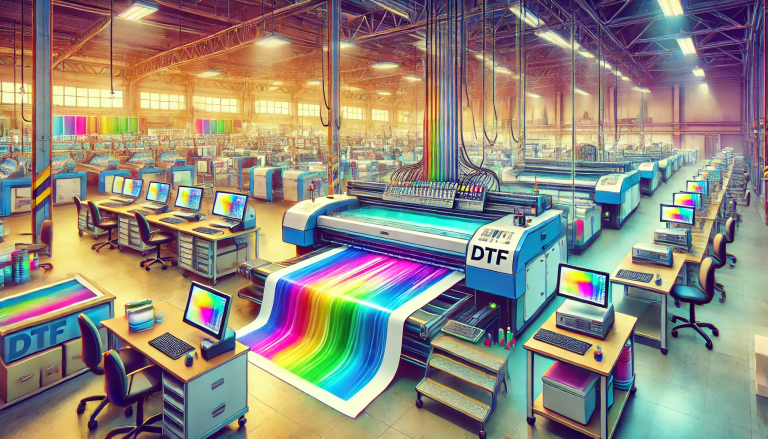“Understanding the Mechanism of Direct to Film (DTF) Printing” -MAXDTF- DTF Transfer Film Matte Supplier, PET Film DTF roll Manufacturer, Made in China
Introduction
In the current age of technology, where new methods are continually being invented to simplify complex tasks, one domain that has seen significant progress in printing technology. Among the newest innovations, Direct to Film (DTF) printing has revolutionized the world of garment decoration. Unlike traditional methods, DTF printing allows high-resolution, full-color images to be transferred onto fabrics without any limitations on design, providing high-quality prints with excellent color vibrancy and durability.
Part 1: Understanding DTF Printing
DTF printing, short for Direct-to-Film, is a new technology that merges the benefits of both Direct-to-Garment (DTG) and heat transfer printing. Unlike traditional screen printing, where each color requires a separate screen, DTF printing uses a special film to print the design in one go, eliminating the time-consuming color separation process.
DTF printing operates by first printing a design onto a specialized film, followed by the application of adhesive powder. Once the powder sticks to the film’s ink, it’s cured under high heat. The completed product is a transfer that can be heat pressed onto various materials, including cotton, polyester, nylon, leather, and more.
Part 2: The Step-by-Step DTF Printing Process
The DTF printing process involves several steps.
- Designing: First, a design is created or chosen. This design is then processed via graphic design software, typically Photoshop or Illustrator, where it can be edited and refined.
- Printing: The design is then printed onto a special PET film using a modified inkjet printer that uses CMYK plus white ink. The ink is dispersed in tiny droplets onto the film, ensuring high-resolution image quality.
- Applying Adhesive Powder: After printing, an adhesive powder is applied to the printed film. The powder only sticks to the wet ink areas, providing a means for the design to adhere to the fabric in the final step.
- Curing: The film, now covered with adhesive powder, is passed through an oven or heat tunnel. This heat cures the powder, bonding it to the ink and drying the print.
- Heat Pressing: The finished film is placed onto the garment, and a heat press is used to transfer the design from the film onto the fabric. The adhesive powder activates, adhering the ink to the fabric and leaving behind a high-quality, vibrant, and durable print.
Part 3: Advantages of DTF Printing
DTF printing offers several unique advantages that set it apart from traditional printing methods:
- Versatility: DTF printing can be used on a wide variety of fabrics, including cotton, polyester, nylon, and mixed blends.
- Design Freedom: Unlike screen printing, which requires different screens for each color, DTF printing can reproduce complex, multi-colored designs with high precision.
- Cost-Effective for Small Batches: Since DTF printing doesn’t require screens or color separations, it’s economical for small runs, unlike screen printing, which requires a significant upfront investment.
- High-Quality Prints: The combination of CMYK inks and white ink ensures vivid, high-resolution prints with excellent color vibrancy and sharp details.
Part 4: Future of DTF Printing
As DTF technology continues to evolve, it holds exciting potential for the future of garment decoration. The ability to produce highly detailed, full-color images on a wide range of fabrics will undoubtedly open up new possibilities for clothing designers and manufacturers. It also provides an opportunity for small businesses and hobbyists to produce professional-grade garments without a large upfront investment.




